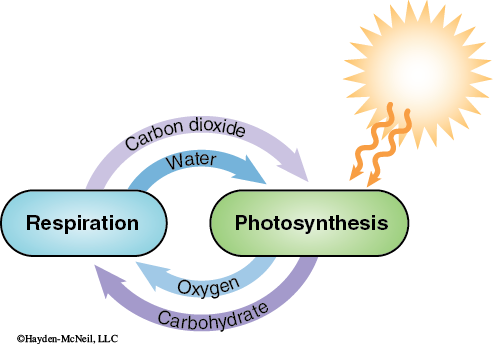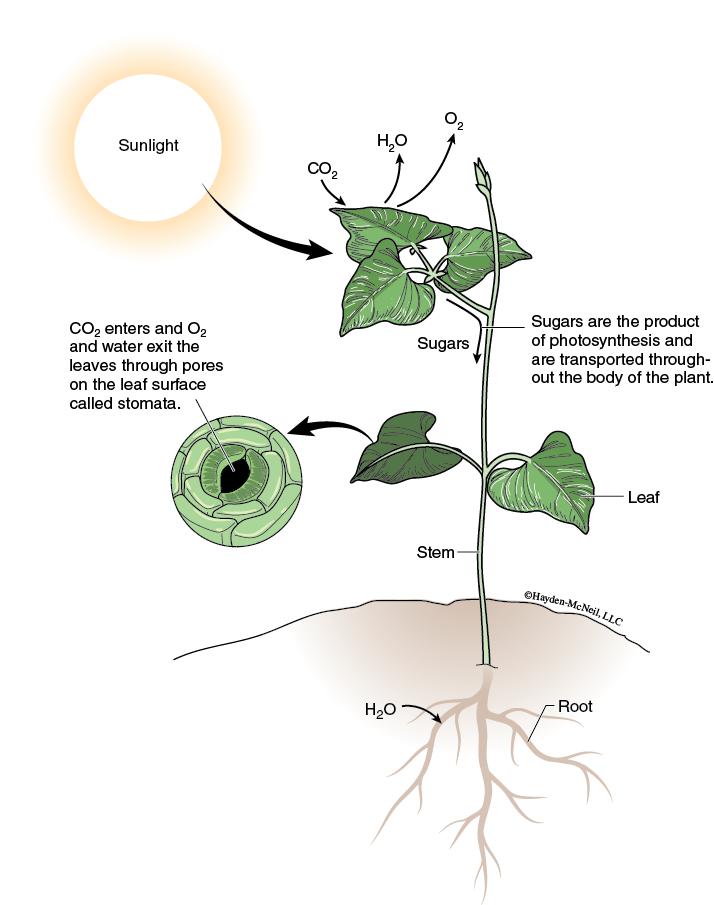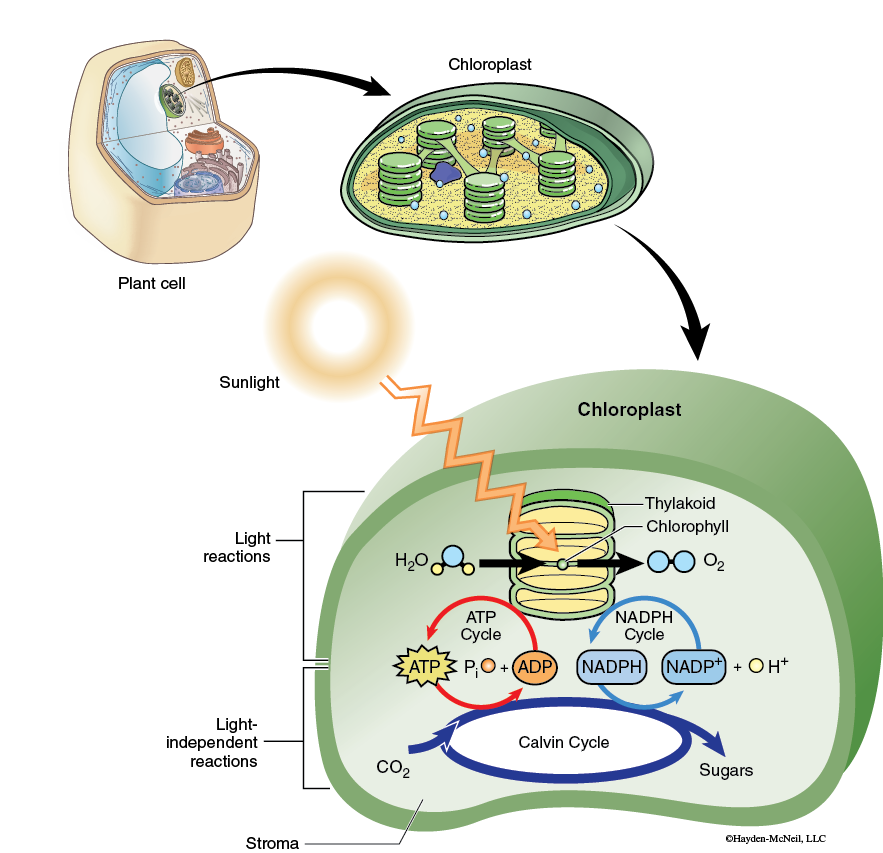Chapter 2. Carbon Metabolism: Light and Photosynthetic Pigments
General Purpose
This pre-lab will present some of the general concepts related to the process of photosynthesis.
Learning Objectives
General Purpose
- Develop a basic understanding of the reactions and role of photosynthesis.
This is the first in a series of laboratories that will explore some of the concepts involved in general metabolism of carbon compounds by organisms. The understanding of how cells and organisms create or use these carbon-based molecules is an important part of comprehending how energy is used in biological systems.
Background Information
Organisms are involved in two major aspects of the cycling of carbon in the environment: photosynthesis and respiration. During photosynthesis, atmospheric carbon dioxide (CO2) is fixed to produce organic biomolecules. In the process of respiration organisms utilize carbon-based molecules to produce cellular adenosine triphosphate (ATP) and CO2 (Figure 7-1).

The process of photosynthesis consists of two stages, known as the light reactions (or energy-capturing reactions) and the Calvin cycle (Figure 7-2).


In the light reactions, light energy is absorbed by the pigments in the chloroplasts and converted to chemical energy in the form of ATP and the reduced form of nicotinamide adenine dinucleotide phosphate (NADPH). Water is split in the process and oxygen is released as a by-product to the atmosphere. The Calvin cycle uses the ATP and NADPH from the light reactions and CO2 from the atmosphere to produce carbohydrates (sugars). These energy-rich organic molecules can be used by the plant during cellular respiration or can be used as an energy source by animals and other organisms that consume them. In summary, the chloroplasts use light energy to make sugar by linking the two stages of photosynthesis.
Pre-Lab Quiz
Proceed to the Pre-Lab Quiz